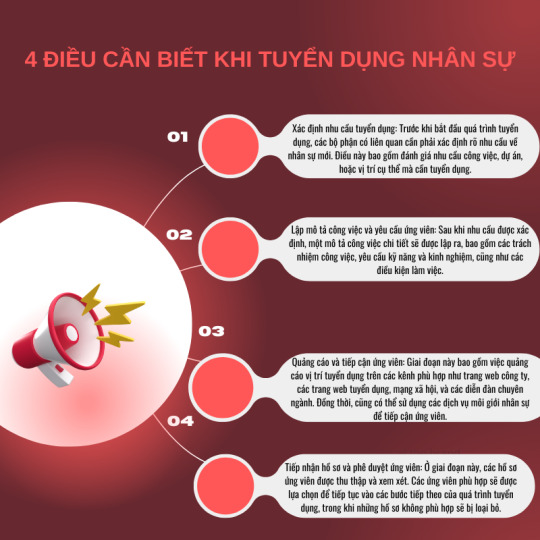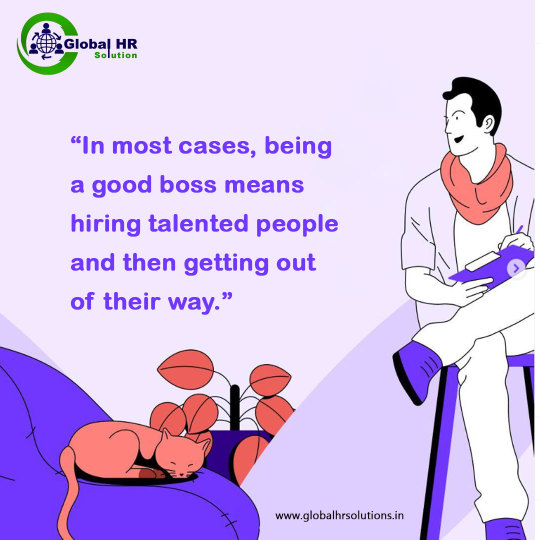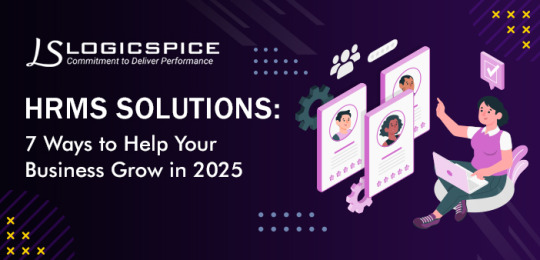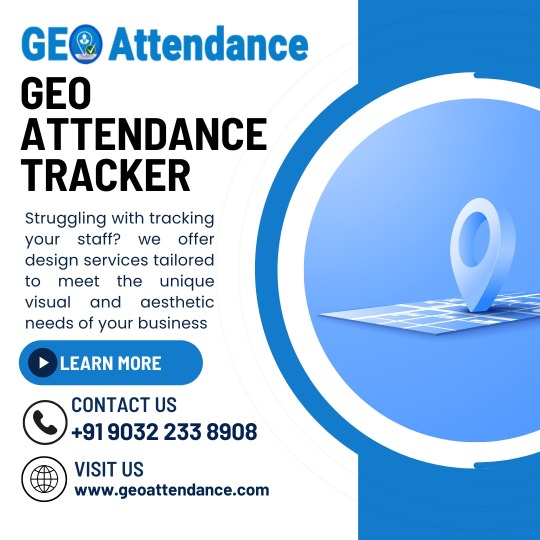#hrm solutions
Explore tagged Tumblr posts
Text
#hr software india#payroll software india#best hr software in india#hr payroll software#best payroll software india#hr management software#hrm solutions#hrm software solutions#hrm solutions india#hrms suite
0 notes
Text
Cipherwinghsolution
Enhance your enterprise with CipherWingSolution's IT Services
Today’s world is highly digitalized and a competent IT partner is influential in helping attain growth and even efficiency. CipherWingSolution is equipped with a wide array of IT services helping various businesses cope with the rapid technological advancements.
Custom Software Development: So as to automate various functions and enhance productivity, we offer bespoke software development that fulfills the particular requirements of your enterprise. Our focus is to develop scalable and accessible applications that propel your venture to greater heights.
Web and Mobile Development: Access and business visibility is enhanced through our web development services where we create dynamic and responsive websites. In addition, mobile applications are also developed for both the android and iOS platforms to ensure optimum usability for users.
Cloud Solutions: Adopting cloud computing can increase your business’s agility and security. Consequently, our cloud infrastructure, migration and integration services ensure that your essential corporate data remains safe while you have access to it as well as other valuable resources without much of a hassle.
Cybersecurity Services: Safeguarding your online assets is of utmost importance. Such services include vulnerability assessment and penetration testing are part of cyber security services offered to protect your business.
IT Consulting & Network Management: At CipherWingSolution, we give you IT strategy consulting services that help you fit technology in your business objectives. The other type of management we offer is network management so that you can operate seamlessly.
Data Analytics: Make the most of your data using our analytical services. Such data is utilized to produce insights which are useful in decision making for the growth of the business.
Opting for CipherWingSolution entails opting for a partner who is committed to providing growth and efficacy oriented IT solutions. We will help you prosper in this digital world by offering you services that are both competitive and safe. Contact Us Now To Learn What we can Do For Your Business’s IT Requirements!
#digital marketing#hrms solutions#crm services#seo services#social media marketing#marketing agency#google ads#search engine optimization#web desing#web development#tech
2 notes
·
View notes
Text
HRMS System: 7 Powerful Ways It Can Transform Your Business Operations

In today's fast-paced business environment, efficiency and productivity are paramount. One way businesses are achieving these goals is by leveraging Human Resource Management Systems (HRMS). These systems have evolved from simple employee databases to comprehensive tools that can revolutionize how businesses operate. In this blog, we'll explore seven ways an HRMS system can transform your business operations.
1. Streamlined Recruitment Process
Recruiting top talent is a critical function of any HR department. An HRMS system can significantly streamline the recruitment process by automating many of the tasks involved. From posting job ads to tracking applications and scheduling interviews, an HRMS can handle it all.
Automation of Administrative Tasks
HRMS systems can automate repetitive administrative tasks, freeing up HR professionals to focus on more strategic activities. For example, an HRMS can automatically screen resumes based on predefined criteria, schedule interviews, and send out automated emails to candidates.
Enhanced Candidate Experience
A streamlined recruitment process not only benefits HR but also improves the candidate experience. An HRMS system provides a seamless application process, timely communication, and easy access to information, enhancing the overall candidate experience.
Data-Driven Decision Making
HRMS systems provide detailed analytics and reporting capabilities that can help HR professionals make data-driven decisions. For example, an HRMS can track the source of the most successful hires, helping HR to focus their recruitment efforts on the most effective channels.
2. Improved Employee Onboarding
Employee onboarding is a crucial step in the employee lifecycle. A well-structured onboarding process can lead to higher employee satisfaction and retention rates. An HRMS system can revolutionize the onboarding process by automating and streamlining it.
Personalized Onboarding Plans
An HRMS system can create personalized onboarding plans for new hires, ensuring that they receive the training and resources they need to succeed in their roles. This can include automated workflows, task lists, and access to relevant documents and training materials.
Seamless Integration
An HRMS system can integrate with other systems used by the company, such as payroll and benefits administration, ensuring that new hires are set up in all necessary systems from day one. This reduces the administrative burden on HR and ensures a smooth onboarding process.
Ongoing Support
An HRMS system can provide ongoing support to new hires through self-service portals and access to training materials. This helps new employees quickly get up to speed and feel supported as they transition into their new roles.
3. Enhanced Employee Engagement
Employee engagement is a key driver of productivity and retention. An HRMS system can help improve employee engagement in several ways.
Performance Management
An HRMS system can provide tools for continuous performance management, including goal setting, performance reviews, and feedback. This helps employees stay aligned with company objectives and receive regular feedback on their performance.
Employee Recognition
An HRMS system can include employee recognition programs, allowing employees to recognize and reward their peers for their contributions. This can boost morale and create a positive work environment.
Employee Surveys
An HRMS system can facilitate regular employee surveys to gather feedback on various aspects of the workplace. This feedback can be used to identify areas for improvement and take action to address employee concerns.
4. Efficient Payroll and Benefits Administration
Payroll and benefits administration can be time-consuming and complex. An HRMS system can streamline these processes and ensure accuracy and compliance.
Automated Payroll Processing
An HRMS system can automate payroll processing, ensuring that employees are paid accurately and on time. This includes calculating wages, taxes, and deductions, and generating pay stubs.
Benefits Administration
An HRMS system can simplify benefits administration by providing a self-service portal where employees can enroll in and manage their benefits. This reduces the administrative burden on HR and ensures that employees have easy access to their benefits information.
Compliance
An HRMS system can help ensure compliance with various labor laws and regulations by automating compliance-related tasks and providing regular updates on changes in legislation. This reduces the risk of non-compliance and associated penalties.
5. Data Management and Analytics
Data is a valuable asset for any business. An HRMS system can help manage and analyze HR data to provide valuable insights.
Centralized Data Management
An HRMS system provides a centralized repository for all HR data, making it easy to access and manage. This includes employee records, payroll information, benefits data, and more.
Advanced Analytics
An HRMS system can provide advanced analytics capabilities, allowing HR professionals to analyze data and identify trends. For example, an HRMS can track employee turnover rates, identify the causes of turnover, and develop strategies to improve retention.
Data Security
An HRMS system ensures the security and confidentiality of HR data by implementing robust security measures. This includes data encryption, access controls, and regular security audits.
6. Regulatory Compliance
Compliance with labor laws and regulations is a critical aspect of HR management. An HRMS system can help ensure compliance and reduce the risk of non-compliance.
Automated Compliance Reporting
An HRMS system can automate compliance reporting, ensuring that all necessary reports are generated accurately and on time. This includes reports related to payroll, benefits, and employee records.
Regular Updates
An HRMS system provides regular updates on changes in labor laws and regulations, ensuring that HR professionals are always informed about the latest requirements. This helps to ensure that the company remains compliant with all relevant laws and regulations.
Audit Trails
An HRMS system provides audit trails for all HR activities, making it easy to track and verify compliance-related tasks. This can be especially useful during audits or investigations.
7. Scalability and Flexibility
As businesses grow and evolve, their HR needs change. An HRMS system can provide the scalability and flexibility needed to support this growth.
Scalable Solutions
An HRMS system can scale to accommodate the growing needs of a business. This includes adding new users, expanding functionality, and integrating with other systems.
Customizable Workflows
An HRMS system can provide customizable workflows to meet the unique needs of the business. This includes creating custom workflows for recruitment, onboarding, performance management, and more.
Adaptability
An HRMS system can adapt to changes in the business environment, such as changes in labor laws or shifts in business strategy. This ensures that the HRMS system remains relevant and effective over time.
Conclusion
Implementing an HRMS system can revolutionize your business operations by streamlining processes, improving efficiency, and providing valuable insights. From recruitment and onboarding to payroll and compliance, an HRMS system can transform how your business manages its human resources. By leveraging the power of an HRMS system, businesses can create a more productive, engaged, and compliant workforce, driving long-term success.
3 notes
·
View notes
Text
Top 5 Ways to Encourage Positive Communication at the Workplace
Effective communication has become one of the most essential requirements for a successful and thriving workplace. Well-articulated views only help in making the most of teamwork. Positive and relevant communication leads to enhanced employee morale and productivity. Further, it fosters a culture of positivity and transparency which are essential for any organisation’s success today. Below are proven strategies to encourage positive communication that you can consider incorporating.
Understand What is Formal Communication
Formal communication is the structured and official method of sharing information within an organization. This may include emails, reports & official notices. Formal communication channels will ensure that only accurate information passes in the organization. This will eliminate potential chances of misunderstandings
Encourage Constructive Feedback
Employees need to know how they are performing and how satisfactory their work is, so when communicating about their performances it's important to focus on both strengths as well as the areas that need improvement. Encouraging them for their good work and at the same time allowing them to understand their weaknesses will help them to better their efficiency without unnecessary doubts
Positive Work Environment
Remuneration of Employees is an indispensable part of every workplace. However, we should not forget to motivate employees from time to time. Allowing employees to put forward work-related ideas and encouraging them to voice their views on essential matters will profoundly impact them. Organizations should foster an environment where employees can collaborate freely and communicate positively without fears
Articulate Work Policies Properly
Not communicating work policies properly has been known to create an environment of chaos. Right from compensation policies, how to calculate CTC, and performance expectations to personal leave reasons list, companies should put forward everything that employees should know about. Also, employees should be encouraged to clarify their doubts or any questions that they may have regarding the same
Be Specific and Concise
When an organization is working towards making the workplace more open to free and positive communication then it's essential to focus on what is being communicated and how it is communicated. Relevant messages should be crisp and concise so that no unnecessary information is added to the message
In conclusion, creating positive communication in the workplace is all about encouraging structured and formal communication, providing constructive feedback, creating a positive work environment, and advancing crisp and relevant information. Just by implementing these simple strategies, organizations can become more cohesive, and productive workplaces.
2 notes
·
View notes
Text

A customizable HRM software can work as per your organization's needs. Modify as per your requirement. Inbox to view the demo now: https://fiverr.com/s/Zrpbxl
#HumanResources #ManagementSoftware #CustomizableSolutions #HRM #SoftwarePlatform #TechnologyNews #Tech #Innovation #ai #ArtificialIntelligence #TechnologyTrends #CryptoMarket #InnovationInTech #SmartTech #AIRevolution #FutureOfTech #BlockchainTechnology #CryptocurrencyNews #CryptoInvesting #AIApplications #TechInnovations #DigitalCurrency #AIoT #MachineLearning #CryptoAnalysis #EmergingTech #AIInnovation #TechIndustry #Insights #CryptoInfluence
#university#lgbtq#technology#gay#studyblr#educación#hr management#hrmanagement#hrms software#hrms solutions#hrmemes#human resources#tech
3 notes
·
View notes
Text
Điều cần biết khi tuyển dụng nhân sự hiệu quả.

2 notes
·
View notes
Text

Best Recruitment Services Agency | Global HR Solution
website :https://globalhrsolutions.in/recruitment-services
#hr solutions#human resource solution#hr#hrm#temporary staffing#contractual recruitments#contractual staffing#outsourcing service#outsourcing taxation#outsourcing accounting#outsourcing finance#business consulting#staffing#contractor#placement consultancy#placement agency#human resources#recruitment#hrmanagement#payroll#hiring#talent acquisition#corporate compliance#executive search#global hr solutions#b2b services#b2b lead generation#b2bmarketing#outsourcing#onlinebusiness
2 notes
·
View notes
Text
3 notes
·
View notes
Text
HRMS Solutions: 7 Ways to Help Your Business Grow in 2025

Introduction Every growing business faces the same challenge—how to manage people efficiently while staying compliant and reducing costs. The solution? A user-friendly HRMS software that takes care of payroll, hiring, attendance, and more, so you can focus on growth.
As we step into 2025, human resource management software for small businesses and large enterprises is getting smarter with advanced features like AI-driven analytics, cloud-based accessibility, and automation. Investing in the best HRMS payroll software can significantly impact business growth by reducing manual workload, improving decision-making, and enhancing employee experience.
In this blog, we’ll explore seven ways HRMS HR software can help your business grow in 2025 and beyond.
1. Speed Up Your Hiring Process
Hiring the right people quickly is crucial for business success. Traditional hiring methods can be slow and overwhelming, with HR teams juggling job postings, resume screening, interviews, and onboarding.
A human resource management system simplifies this by automating key hiring steps. It can:
Create job listings and post them across multiple platforms.
Use AI-powered resume screening to identify top candidates.
Track applicants and streamline interview scheduling.
Automate onboarding paperwork, saving HR valuable time.
Pairing your HRMS with an applicant tracking system (ATS) makes the hiring process even more efficient, providing insights into hiring bottlenecks and helping you select the best candidates.
2. Keep Your Best Employees Engaged
Hiring great employees is one thing—keeping them happy and motivated is another. Employees are more likely to stay when they feel valued, challenged, and supported in their professional growth.
A human resource management software for small businesses and enterprises alike can boost retention by offering:
Employee training & development programs to enhance skills
Career progression tracking to help employees set and achieve goals
Continuous feedback tools to improve communication between managers and employees
By investing in employee growth, businesses not only keep top performers engaged but also build a stronger, more skilled workforce.
3. Automate Payroll & HR Tasks to Save Time
Handling payroll, attendance, and benefits manually is not only time-consuming but also prone to costly errors. HRMS payroll software automates these tasks, allowing HR teams to focus on strategic initiatives instead of paperwork.
With HRMS automation, you can:
Process payroll efficiently, tracking salaries, taxes, and direct deposits.
Automate attendance & leave tracking, reducing manual work.
Simplify employee onboarding & offboarding, making transitions smooth.
Automation reduces human error, ensures compliance, and gives HR teams more time to focus on building a positive workplace culture.
4. Boost Employee Performance & Productivity
A motivated workforce is key to business success. An HRMS solution helps businesses track and improve employee performance with:
Goal setting – Employees can monitor progress in real-time.
Providing data-driven feedback – Managers get insights into employee strengths and areas for improvement.
Recognizing achievements – Automating rewards and performance incentives.
With HR software for human resource management, performance reviews become more meaningful and effective, making the process less stressful for employees and managers.
5. AI-Powered Recruitment & Talent Acquisition
Hiring the right talent is critical for business growth. Advanced HRMS software solutions integrate with Applicant Tracking Systems (ATS) to:
Automatically screen resumes based on job requirements
Schedule interviews using AI chatbots for a faster process.
Reduce hiring time and improve candidate experience
With AI-powered recruitment, businesses can fill positions faster, reduce hiring costs, and attract top talent more efficiently.
6. Secure Employee Data & Stay Compliant
Employers must ensure the security of employee data and comply with ever-changing privacy laws, which can be challenging. HRMS solutions help by offering features that support compliance with regulations. With increasing concerns over data privacy, protecting employee information is a top priority. HRMS software solutions help businesses:
Encrypt sensitive data and control user access
Ensure compliance with regulations like GDPR & labor laws
Securely store employee records to prevent unauthorized access
By managing employee data responsibly, businesses build trust and avoid costly legal issues.
7. Cost Reduction & Better ROI on HR Investments
One of the biggest benefits of using human resource management software for small businesses and enterprises is cost savings. HRMS solutions help in:
Reducing paperwork and & administrative costs.
Minimizing payroll errors and compliance risks
Optimizing workforce planning for better efficiency
Companies that switch to software for human resource management can cut HR-related costs by up to 30% while improving productivity.
Recommended Read: The Future Of Hiring: Exploring The Latest Trends In Recruitment Management Software
Conclusion:
As we move into 2025, HRMS software will continue to be a game-changer for businesses looking to manage their workforce more efficiently. From hiring and payroll to employee engagement and compliance, HRMS solutions simplify operations, save time, and reduce errors. By investing in the right HRMS software, businesses can focus on growth and create a positive work environment for their employees.
Ready to improve your HR operations?
Check out the best HRMS software for your business and take the next step toward success!
0 notes
Text
Best HR and payroll software in India
HR software is software designed to help manage all aspects of the human resources process, including recruitment, onboarding, payroll, employee benefits and administration, and performance management. HR software India The software helps streamline and automate many of the manual processes associated with human resources, making it easier for HR teams to manage their workloads more efficiently.
Hr Payroll software is a computer program that automates the processing of employee payroll and associated taxes. This type of software typically processes payments such as wages, salaries, bonuses, commissions, and deductions. It is often used to generate reports, track employee attendance, manage benefits, and provide compliance with government regulations.
#hr software india#payroll software india#best hr software in india#hr payroll software#hrm solutions#hrm solutions india#hrms suite#best payroll software india
0 notes
Text

GeoAttendance offers cutting-edge attendance tracking and workforce management solutions using GPS technology. Streamline employee time tracking, monitor remote teams, and improve productivity with our user-friendly mobile app and software. Discover seamless solutions for businesses of all sizes.
#StreamlineFM#FacilitiesManagement#FMTech#PropTech#BuildingMaintenance#SmartBuildings#WorkplaceSolutions#Efficiency#Productivity#Innovation#GeoAttendance#HRManagement#AttendanceTracking#EmployeeEngagement#WorkforceManagement#HRTech#EmployeeProductivity#hrm software#hrms payroll software#hrms solutions#hrms systems#hrms benefits#businessefficiency#business#employee management software
0 notes
Text
Future-Proofing HRMS: Adapting to the Evolving Data Privacy Landscape Beyond 2025
In an era where data privacy regulations are rapidly evolving, Human Resource Management Systems (HRMS) must be designed to adapt and comply with emerging laws beyond 2025. With increasing concerns over employee data security, AI-driven decision-making, and cross-border data transfers, businesses need to ensure their HRMS solutions remain future-ready.
This article explores the key data privacy trends, challenges, and strategies that HR professionals and organizations must adopt to future-proof their HRM with uKnowva HRMS in an increasingly complex regulatory environment.
1. The Changing Data Privacy Landscape
A. The Rise of Global Data Protection Laws
Data privacy regulations like GDPR, CCPA, and India’s DPDP Act have set a precedent for stronger employee data protection. Beyond 2025, we can expect:
Stricter compliance requirements for employee data storage and processing.
Higher penalties for non-compliance.
Expanded rights for employees to control their personal data.
B. The Role of AI and Machine Learning in HRMS
AI-driven HRMS tools are automating recruitment, performance analysis, and workforce planning. However, concerns over bias, transparency, and ethical AI usage are prompting new regulations that HRMS providers must comply with.
2. Key Challenges in HRMS Data Privacy Compliance
A. Cross-Border Data Transfers
Many companies operate globally, meaning HR data often crosses multiple jurisdictions. Stricter data localization laws will require:
Localized HRMS solutions for different regions.
Robust encryption and compliance frameworks for international data transfers.
B. Employee Consent & Data Ownership
Future privacy laws will likely mandate:
Stronger employee consent mechanisms for data collection.
Greater transparency in AI-driven HR decisions.
C. HR Data Breaches & Cybersecurity Risks
HR data contains sensitive employee information, making it a prime target for cyberattacks. Organizations need:
Zero-trust security models for HRMS platforms.
Regular audits and penetration testing.
3. Future-Proofing HRMS: Key Strategies
A. Implementing Privacy-by-Design in HRMS
HRMS providers should integrate data protection measures at every stage, including:
End-to-end encryption for employee records.
Automated compliance checks to align with new regulations.
Role-based access control (RBAC) to limit data exposure.
B. Leveraging AI Ethically in HRMS
AI-powered HR tools must be designed to:
Eliminate bias in hiring and performance evaluations.
Provide explainable AI models to ensure fairness and compliance.
Enable employees to opt-out of AI-driven assessments.
C. Enhancing Employee Data Rights & Transparency
Organizations should offer:
Self-service HR portals for employees to view, modify, or delete their data.
Detailed privacy policies explaining how HR data is used.
D. Strengthening Cybersecurity Measures
To prevent data breaches, HRMS systems must adopt:
Multi-factor authentication (MFA) for all HR data access.
Automated anomaly detection to identify suspicious activities.
Frequent security training for HR teams.
E. Continuous Compliance Monitoring
Given the evolving legal landscape, HRMS solutions must offer:
Automated compliance updates to align with new laws.
Real-time reporting tools to track data access and modifications.
HR compliance dashboards for easy auditing.
4. The Role of Cloud-Based HRMS in Data Privacy Compliance
A. Benefits of Cloud HRMS for Data Security
Cloud-based HRMS solutions, such as uKnowva HRMS, offer:
Scalable security infrastructure to handle large volumes of employee data.
Automated backups and disaster recovery for data protection.
Built-in compliance tools for different data protection laws.
B. Choosing a Privacy-Compliant HRMS Vendor
When selecting an HRMS provider, businesses should look for:
ISO 27001 and SOC 2 certifications.
GDPR and local compliance alignment.
Customizable data retention policies.
5. The Future of HRMS: What to Expect Beyond 2025
By 2030, HRMS will likely include:
Decentralized identity verification using blockchain for enhanced data security.
AI-driven regulatory compliance assistants to track global law changes.
Automated employee privacy dashboards for real-time data control.
HR teams must stay proactive in adapting to these changes to ensure compliance and maintain employee trust.
Conclusion
As data privacy regulations tighten worldwide, businesses must ensure their HRMS solutions are adaptive, compliant, and secure. By integrating AI ethically, strengthening cybersecurity, and enhancing employee data rights, organizations can future-proof their HRMS and navigate the evolving landscape with confidence.
0 notes
Text
Top 5 HR Management Software of 2025: Streamlining Workforce Management

Managing a workforce can be as complex as overseeing a team of superheroes. Just as Madelyn Stillwell managed The Seven, HR professionals need powerful tools to organize and manage their teams. HR Management Software (HRMS) provides the solutions needed for tasks like recruitment, payroll, performance tracking, and compliance. These tools help HR teams streamline operations and focus on strategic growth.
For 2025, we’ve identified the top 5 HR management tools that cater to various business needs, from small startups to large enterprises.
ADP Workforce Now: This all-in-one solution is ideal for medium to large businesses, offering payroll, benefits, talent management, and compliance features. Its advanced analytics and self-service options make it a reliable choice for businesses with complex HR requirements.
Rippling: Known for its integration capabilities, Rippling combines HR and IT management. With features like payroll automation, policy enforcement, and device management, it’s perfect for small to mid-sized companies seeking a comprehensive system.
BambooHR: Focused on small to mid-sized businesses, BambooHR simplifies HR tasks, including employee data management, payroll, benefits tracking, and performance reviews. Its intuitive interface and effective onboarding tools make it a great choice for growth-focused teams.
Deel: This platform is tailored for businesses managing remote or international teams. Deel automates global payroll and compliance, supporting over 150 countries. Its AI-powered tools for career development and talent engagement are key for expanding teams.
Jotform: Primarily a form-building tool, Jotform excels in HR workflows through customizable forms and e-signatures. It integrates seamlessly with other platforms, simplifying administrative tasks for HR teams.
These HR tools streamline operations and empower HR professionals to enhance productivity and manage their workforce effectively.
0 notes
Text

Thuốc chữa bệnh đau đầu cho phòng nhân sự đây!
5 notes
·
View notes
Text
HRCraft top HR software solutions to streamline recruitment, onboarding, payroll, and employee management. Simplify processes, enhance productivity, and improve workforce engagement with innovative tools tailored for businesses of all sizes.
#HR software solutions#payroll management software#employee payroll system#human resource management#employee payroll management system#top hrms software in india#salary management system
1 note
·
View note